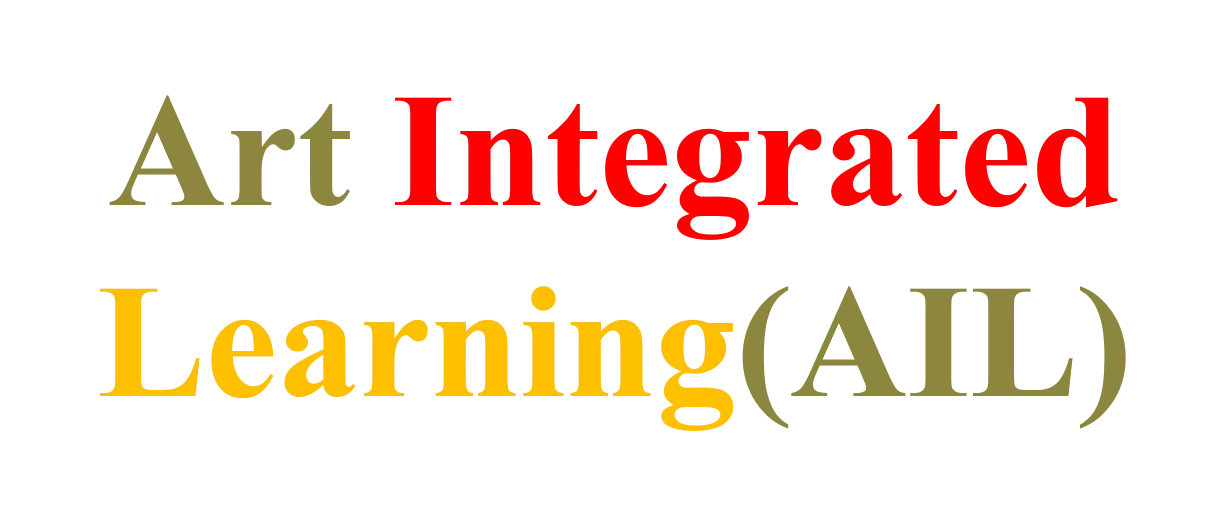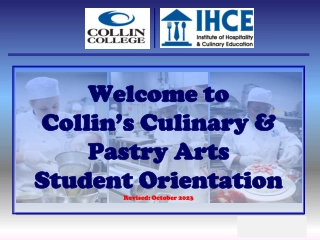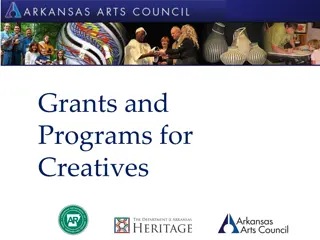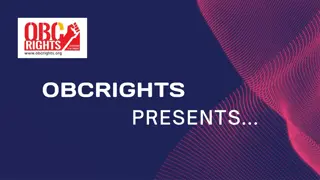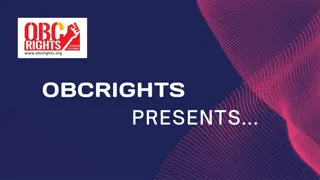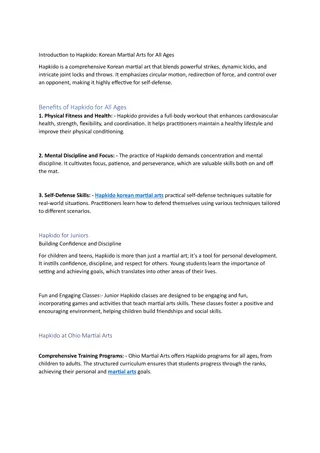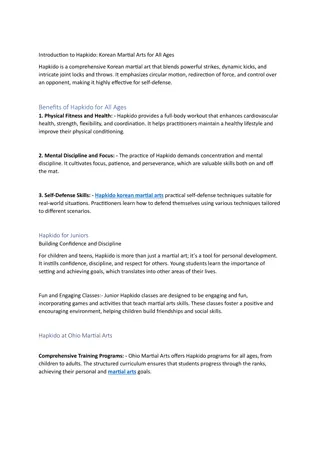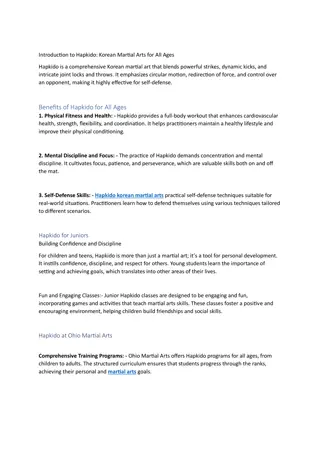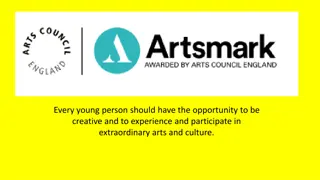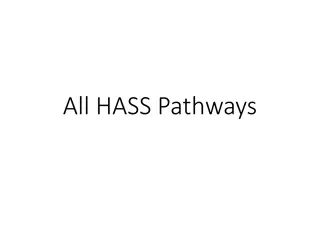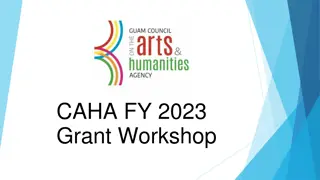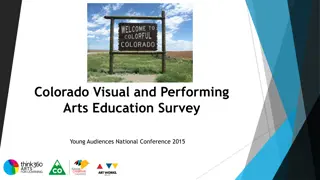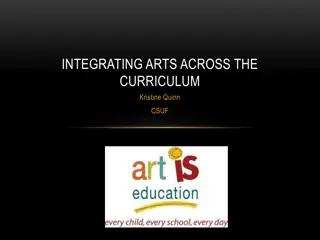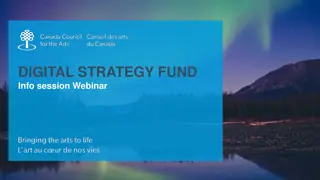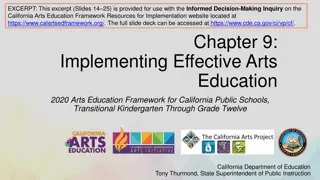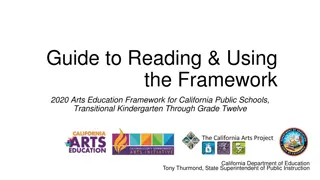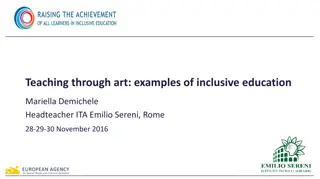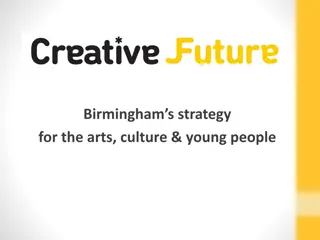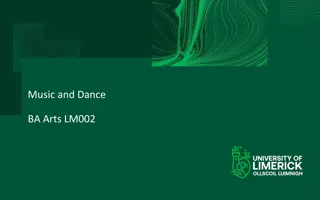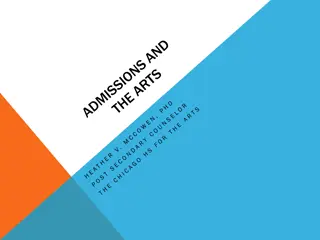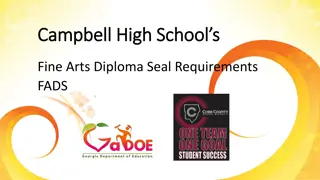Art Integrated Learning (AIL) - Enhancing Education Through the Arts
Art Integrated Learning (AIL) is a teaching model that utilizes art as a medium for learning and understanding various subjects. By incorporating visual and performing arts, AIL aims to make learning engaging, promote creativity, foster emotional expression, and enhance critical thinking skills among learners. Through joyful experiences and interdisciplinary connections, AIL encourages children to explore, express freely, and develop a deeper appreciation for their environment and cultural heritage.
Uploaded on Jul 16, 2024 | 0 Views
Download Presentation

Please find below an Image/Link to download the presentation.
The content on the website is provided AS IS for your information and personal use only. It may not be sold, licensed, or shared on other websites without obtaining consent from the author. Download presentation by click this link. If you encounter any issues during the download, it is possible that the publisher has removed the file from their server.
E N D
Presentation Transcript
StudyMafia.Org Art Integrated Learning(AIL) Submitted To: Submitted By: Studymafia.org Studymafia.org
Table Contents Definition Introduction Objectives of AIL Strategies of AIL Principles of AIL Conclusion 2
Definition Art Integrated Learning (AIL) is a teaching-learning model which is based on learning through the arts and with the arts : it is a process where art becomes the medium of teaching-learning, a key to understanding concepts within any subject of the curriculum. 3
Introduction Learners explore creatively while building connections between different concepts through various art forms. Art experiences, both in visual (drawing and painting, clay modelling, pottery, paper crafts, mask and puppet making, heritage crafts etc.) and performing arts (music, dance, theatre, puppetry etc.) lead to a better understanding and construction of knowledge about different concepts. 4
Objectives of AIL Make learning joyful and engaging Encourage children to be aware of their environment through keen observation and unhindered exploration Promote sensitivity towards their environment Allow free emotional expression, communication and creative involvement Facilitate children to express freely and spontaneously 6
Objectives of AIL Experience joy and eagerness to learn Learn to live in an inclusive environment Discover concepts of Mathematics and Science in the world around them Be aware of interdisciplinary connections Enhance observation, curiosity, exploration and creative and free expression 7
Objectives of AIL Explore and understand body movement and coordination Develop expressive communication and critical thinking skills Foster an inquisitive attitude towards learning and knowledge Understand and regulate their emotions Create awareness of rich heritage and cultural diversity 8
Strategies of AIL 1. Capacity Building Introducing art as a resource will require re- orienting the school system in the use of it as pedagogical tool. All stakeholders of school education, including the school management need to be oriented to understand the importance and the relevance of this pedagogy. 9
Strategies of AIL 2. Planning of Activities Once the teacher begins to utilise AIL methodology, she would need to work on the dynamics of planning. AIL would require linking art experience to the subject matter seamlessly and to identify methods and techniques to engage children in group activities. 10
Strategies of AIL 3. Planning of time Time management at every stage is an important aspect of teachers professional competence and productivity. Teachers can sometimes find it challenging to take out time for organizing art experiences, due to paucity of time. This can compromise the creation of a joyful and experiential learning environment. 11
Strategies of AIL 4. Resource Planning Proper planning of resources adds a novelty to the art integrated experience. Regular research and extensive groundwork by the teacher helps them to create a rich repository of resources which include regional/local resources. 12
Principles of AIL Perception Perception requires the individual to be a careful observer and an active listener, taking in the subtleties of their surroundings, be it in the classroom or out in nature. 13
Principles of AIL Practice One does not become a star overnight. In order to be successful at any endeavor in life, you must practice. Practice helps us to hone our skills, become more proficient, more adept, and better prepared 14
Principles of AIL Perseverance Perseverance is good old fashion stick-to-it- ness. That means not giving up when things get difficult or push you beyond your comfort zone. Trust me in that most artists and creative individuals make many mistakes along the way before producing something of true beauty and innovation. 15
Principles of AIL Patience Patience and perseverance go hand in hand. Sometimes we feel as though we just have nothing to say so therefore we have no reason to create. When you are stuck in a creative slump the best advice is just to have patience with yourself. 16
Principles of AIL Passion In the end it all boils down to this, passion. In whatever you choose to do in life, however your creative spirit manifests, do it from a place of passion. Be excited about your work. 17
Conclusion Assessment through art integrated learning helps the facilitator to move away from the traditional paper-pencil or oral and recall method towards a continuous and comprehensive assessment method which can help assess both the learning of the subject as well as the socio-emotional development of the student. 19
References Google.com Wikipedia.org Studymafia.org Slidespanda.com
Thanks To StudyMafia.org







